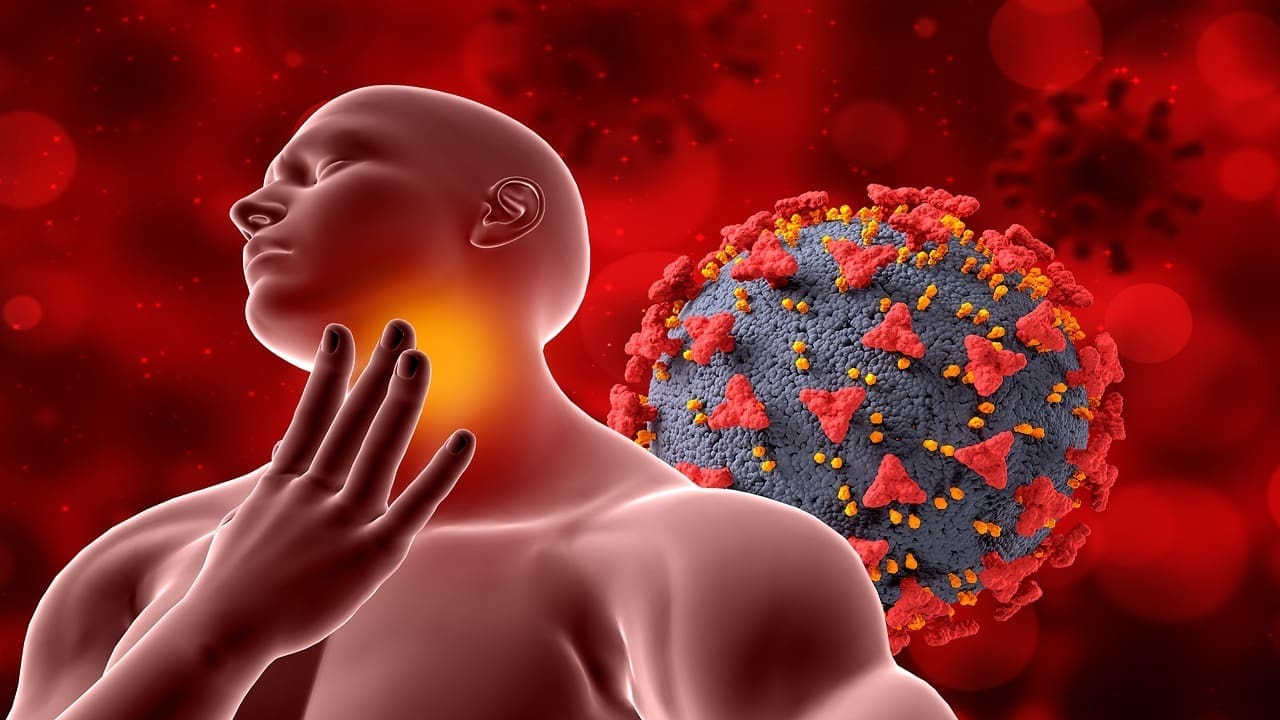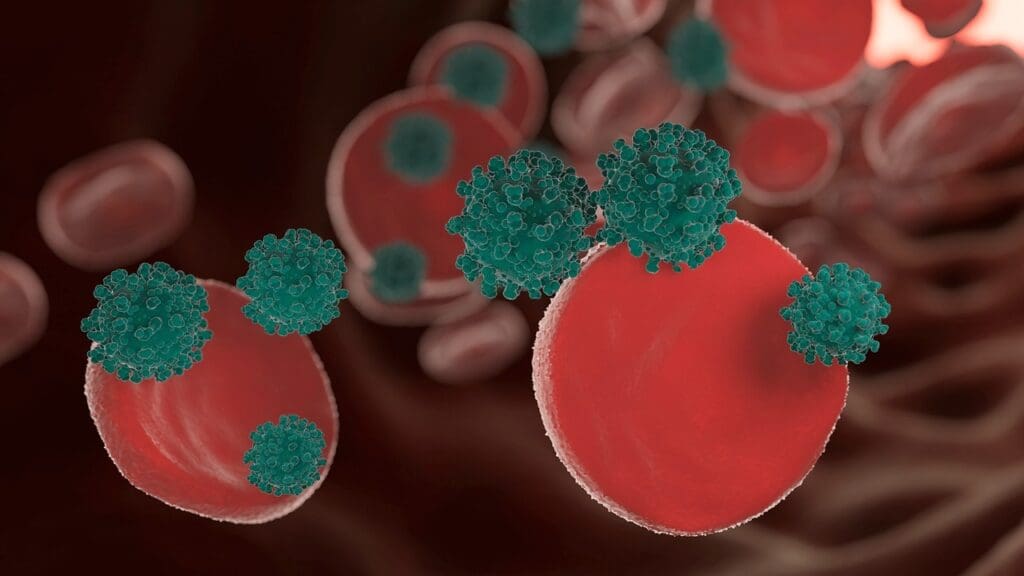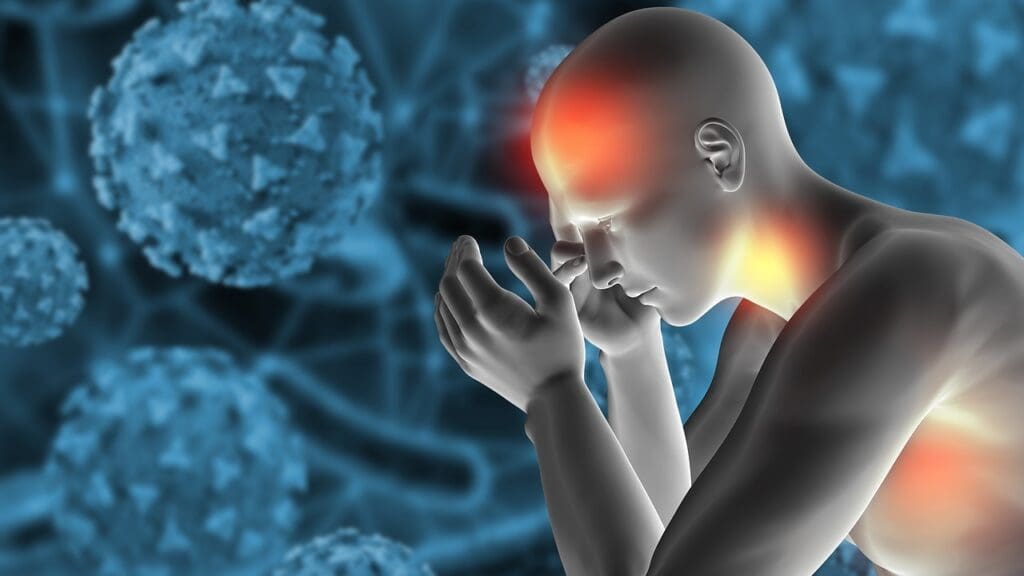Last Updated on November 26, 2025 by Bilal Hasdemir

Getting a diagnosis of diffuse large B-cell lymphoma at stage 4 can feel scary. But knowing about the disease helps you face care with confidence.
At Liv Hospital, we mix international know-how with a focus on you. We offer top-notch diagnostics and treatment plans made just for you. DLBCL grows fast but often responds well to treatment, helping many patients get better.
Knowing about symptoms, stages, and treatments helps you and your family take charge of your care. We’re here to support you every step of the way.
Key Takeaways
- DLBCL is an aggressive form of non-Hodgkin lymphoma.
- Advanced diagnostics are key for finding the best treatment.
- Personalized treatment plans are made just for you.
- Many patients with DLBCL get better with the right treatment.
- We offer full support for patients and families during treatment.
Understanding Diffuse Large B-Cell Lymphoma (DLBCL)
It’s important for patients and doctors to know about Diffuse Large B-Cell Lymphoma (DLBCL). It’s a common type of non-Hodgkin lymphoma. DLBCL grows fast and needs quick treatment.
What is DLBCL?
DLBCL starts in the B cells of the lymphatic system. B cells help fight infections by making antibodies. But in DLBCL, these B cells grow out of control and form tumors.
DLBCL grows quickly and can spread widely at first. It can show up in many places, like lymph nodes, spleen, and organs.
Types of DLBCL
DLBCL is not just one thing. It’s a group of lymphomas with different traits. The main types are:
- Activated B-Cell-like (ABC) DLBCL: This type has a worse outlook and different genetic marks.
Prevalence and Risk Factors
DLBCL makes up about 30% of non-Hodgkin lymphoma cases. It’s more common with age, mostly in people over 60.
| Risk Factor | Description |
|---|---|
| Age | More cases with older age |
| Immunosuppression | Weakens the immune system |
| Infections | Some infections, like Epstein-Barr virus, raise the risk |
Knowing about these risk factors and DLBCL’s biology helps in finding better treatments. Research is looking into BTK inhibitors for B-cell cancers, including DLBCL.
The Lymphoma Staging System Explained
When you’re diagnosed with DLBCL, knowing about the lymphoma staging system is key. It shows how serious your condition is. The system helps doctors figure out how far the cancer has spread. This is important for planning your treatment.
How Lymphomas Are Staged
Lymphomas are staged based on how far the cancer has spread in the body. Doctors check how many lymph node groups are affected. They also look at where the lymphoma is and if it’s spread to other organs.
Key factors in lymphoma staging include:
- The number of lymph node groups involved
- The location of the lymphoma (above or below the diaphragm)
- Whether the lymphoma has spread to organs such as the liver, bone marrow, or lungs
The Ann Arbor Staging System
The Ann Arbor Staging System is commonly used for lymphomas, including DLBCL. It divides lymphoma into four stages based on how far the disease has spread.
| Stage | Description |
|---|---|
| I | Lymphoma is limited to one lymph node group or a single organ |
| II | Lymphoma is in two or more lymph node groups on the same side of the diaphragm |
| III | Lymphoma is in lymph node groups on both sides of the diaphragm |
| IV | Lymphoma has spread to one or more organs outside the lymphatic system |
Additional Staging Considerations
Other factors are also looked at when staging lymphoma. These include B symptoms (like fever, night sweats, and weight loss), bulky disease, and the patient’s overall health.
B symptoms, for example, can indicate a more advanced or aggressive disease. These symptoms can affect treatment choices and how well you might do.
Understanding the lymphoma staging system and what affects it helps both patients and doctors. It makes it easier to deal with DLBCL diagnosis and treatment planning.
Stage 4 Diffuse B Cell Lymphoma: Definition and Characteristics
Stage 4 diffuse large B-cell lymphoma (DLBCL) is a serious cancer. It has spread beyond the lymph nodes. This makes it hard to treat.
What Makes It Stage 4
DLBCL is Stage 4 when it reaches organs outside the lymph nodes. This includes the liver, bone marrow, lungs, or bones. It’s a sign of advanced disease.
Key characteristics of Stage 4 DLBCL include:
- Cancer cells found in multiple lymph node groups and/or in organs outside the lymphatic system
- Potential involvement of the central nervous system
- Possible presence of B symptoms such as fever, night sweats, and weight loss
Common Sites of Spread
In Stage 4 DLBCL, cancer often goes to the liver, bone marrow, and lungs. Bone marrow involvement can cause anemia, fatigue, and more infections.
Differences from Earlier Stages
Stage 4 DLBCL is much different from earlier stages. Earlier stages are usually in one or more lymph nodes. But Stage 4 means the disease is everywhere, needing stronger treatments.
Treatment for Stage 4 DLBCL includes chemotherapy, immunotherapy, and sometimes radiation. It’s customized for each patient’s health and condition.
Pathophysiology of Advanced DLBCL
The disease’s growth in Stage 4 DLBCL is complex. Cancer cells can hide from the immune system. This leads to more cells and treatment resistance.
Knowing how Stage 4 DLBCL works is key to better treatments. Scientists are studying it to help patients more.
Recognizing the Symptoms
It’s key to spot the signs of Stage 4 DLBCL early. This helps in getting the right treatment fast. At this stage, the disease shows up with both body-wide and specific symptoms.
B Symptoms: Fever, Night Sweats, and Weight Loss
B symptoms like fever, night sweats, and weight loss are common in DLBCL patients. These happen because the body fights the lymphoma.
- Fever: Recurring fever shows the body’s fight against lymphoma.
- Night Sweats: Drenching night sweats can really affect a patient’s life.
- Weight Loss: Losing weight without reason is a big warning sign.
Lymph Node Enlargement
Lymph node swelling is a key sign of DLBCL. As lymphoma cells build up, they swell the nodes. This swelling can be painless or hurt.
| Symptom | Description |
|---|---|
| Lymph Node Swelling | Painless or painful swelling in the neck, armpits, or groin |
| Location of Swelling | Can occur in one or multiple lymph node groups |
Organ-Specific Symptoms
DLBCL affecting specific organs can cause different symptoms. For instance, if it hits the gut, you might feel stomach pain, changes in bowel movements, or bleeding.
Knowing these symptoms is vital for doctors to treat Stage 4 DLBCL well. Spotting them early can help a lot in improving patient care.
Diagnosis and Subtyping
Getting a correct diagnosis of DLBCL is key for effective treatment. It involves several tests like biopsy, imaging, and molecular analysis. These tests help figure out how far the disease has spread and what subtype it is.
Biopsy Procedures
A biopsy is the main way to diagnose DLBCL. It means taking a sample of tissue or cells from a lymph node or organ. There are different biopsy types, such as:
- Excisional biopsy: removing an entire lymph node or tumor
- Incisional biopsy: removing a part of the tumor or lymph node
- Core needle biopsy: using a needle to collect a sample of tissue
The sample is then looked at under a microscope. This helps find cancer cells and figure out the DLBCL subtype.
Imaging Tests
Imaging tests help see how far the disease has spread. They check for cancer in other areas. Common tests include:
- Computed Tomography (CT) scans
- Positron Emission Tomography (PET) scans
- Magnetic Resonance Imaging (MRI)
These tests help doctors understand the disease’s stage. They then plan the best treatment.
Laboratory Tests
Laboratory tests are important for diagnosing DLBCL. They analyze blood and tissue samples. Tests may include:
- Complete Blood Count (CBC) to check for abnormal blood cells
- Blood chemistry tests to assess organ function
- Lactate Dehydrogenase (LDH) test to measure the level of LDH, which can be elevated in DLBCL
Molecular Subtyping
Molecular subtyping is a key part of DLBCL diagnosis. It looks at the cancer’s genetic makeup. This info is vital for knowing the prognosis and choosing treatment.
| Molecular Subtype | Characteristics | Prognosis |
|---|---|---|
| Germinal Center B-cell-like (GCB) | Associated with certain genetic features | Generally better prognosis |
| Activated B-cell-like (ABC) | Different genetic profile compared to GCB | Often associated with poorer prognosis |
Knowing the molecular subtype helps doctors tailor treatments. This makes treatment more effective for each patient.
Standard Treatment Approaches for Stage 4 DLBCL
The standard treatment for Stage 4 DLBCL includes several therapies. These work together to fight the cancer. We will look at the main parts of this treatment plan.
R-CHOP Chemotherapy
R-CHOP chemotherapy is a common first treatment for DLBCL. It combines rituximab with cyclophosphamide, doxorubicin, vincristine, and prednisone. This mix has greatly improved treatment results for patients with DLBCL.
The parts of R-CHOP chemotherapy are:
- Rituximab: a monoclonal antibody targeting CD20-positive B cells
- Cyclophosphamide: a chemotherapy drug that interferes with DNA replication
- Doxorubicin: an anthracycline antibiotic that damages DNA
- Vincristine: a vinca alkaloid that disrupts microtubule formation
- Prednisone: a corticosteroid with anti-inflammatory and immunosuppressive effects
Immunotherapy Options
Immunotherapy, like rituximab, is key in DLBCL treatment. It targets cancer cells. Other immunotherapies are being tested in clinical trials.
Radiation Therapy Role
Radiation therapy is used in some cases. It targets specific areas with lymphoma. It helps control symptoms and shrink tumors.
Treatment Duration and Cycles
Treatment length varies, often involving many cycles of chemotherapy. Sometimes, radiation therapy is added. The number of cycles and treatment schedule depend on the patient’s needs and how they respond.
Important points about treatment duration and cycles include:
- Multiple cycles of R-CHOP chemotherapy, usually every 21 days
- Checking how well the treatment is working after a few cycles
- Adjusting the treatment plan if needed
- Follow-up care to watch for long-term effects and any return of the disease
Advanced and Alternative Treatments
For those with advanced DLBCL, new treatments are now available. Medical research keeps growing, leading to new therapies. These aim to improve outcomes for those facing this tough diagnosis.
Stem Cell Transplantation
Stem cell transplantation is a key option for some DLBCL patients. It’s used for those with relapsed or refractory disease. The process involves high-dose chemotherapy followed by stem cell infusion.
Autologous stem cell transplantation is often used for DLBCL patients. It lets doctors use high-dose chemotherapy. This can be more effective against lymphoma cells, while stem cells help the bone marrow recover.
CAR T-Cell Therapy
CAR T-cell therapy is a groundbreaking treatment for DLBCL. It involves removing T-cells, modifying them to attack cancer, and then reinfusing them. This approach has shown remarkable results in treating relapsed or refractory DLBCL.
“CAR T-cell therapy has shown remarkable efficacy in patients with relapsed or refractory DLBCL, providing a potentially curative option for those who have exhausted other treatments.”
The CAR T-cell therapy process is complex. It includes several steps like T-cell collection, manufacturing, and infusion. While promising, it can also cause side effects like cytokine release syndrome, which needs careful management.
Clinical Trials and Emerging Therapies
Clinical trials are vital in advancing DLBCL treatment. They offer patients access to new, innovative therapies. These include targeted treatments, bispecific antibodies, and other immunotherapies.
Joining a clinical trial can be a good option for patients with relapsed or refractory DLBCL. It gives access to potentially life-saving treatments. It also helps in understanding DLBCL better and developing future therapies.
Treatment for Relapsed or Refractory Disease
For patients with relapsed or refractory DLBCL, several options are available. These include salvage chemotherapy, followed by stem cell transplantation or CAR T-cell therapy. The choice depends on the patient’s health, previous treatments, and lymphoma characteristics.
In conclusion, the treatment landscape for DLBCL is rapidly evolving. Several advanced and alternative treatments are now available. Patients should discuss these options with their healthcare provider to find the best treatment for their situation.
Living with Stage 4 DLBCL
Living with Stage 4 Diffuse Large B-Cell Lymphoma (DLBCL) is more than just medical treatment. It involves many aspects like coping strategies, support, nutrition, exercise, and follow-up care.
Coping Strategies
Coping with Stage 4 DLBCL can be tough. Effective coping strategies include talking openly with doctors, getting support from loved ones, and doing stress-reducing activities like meditation or yoga.
It’s also good to connect with others who face similar challenges. Support groups, both in-person and online, offer a sense of community and understanding.
Support Resources
Having the right support can greatly improve a patient’s life. Support can be emotional, practical, or professional. It comes from loved ones, daily help, and guidance from healthcare teams.
Many organizations help cancer patients with counseling, financial aid, and educational materials.
Nutrition and Exercise
Nutrition and exercise are key in managing treatment side effects and staying healthy. A balanced diet with fruits, veggies, and lean proteins keeps patients nourished and energized.
Light exercises like walking or stretching are also good. Always talk to your healthcare team before starting any new exercise.
Follow-up Care and Monitoring
Follow-up care is vital for Stage 4 DLBCL patients. Regular visits with healthcare providers help track the disease and catch any complications early.
Knowing the signs and symptoms that need immediate medical attention is important. Reporting any concerns quickly can prevent serious problems.
Conclusion
We’ve looked into Stage 4 Diffuse Large B-Cell Lymphoma (DLBCL), a serious condition where cancer spreads to different parts of the body. It’s important for both patients and doctors to know the symptoms, stages, and treatment options.
Stage 4 DLBCL means cancer has reached organs like the liver, bone marrow, or lungs, and possibly lymph nodes. Spotting symptoms like fever, night sweats, and weight loss is key to catching it early.
To diagnose, doctors use biopsies, imaging, and lab tests. They also check the cancer’s type through molecular subtyping. Treatment often includes R-CHOP chemotherapy, sometimes with immunotherapy or radiation.
For those with cancer that doesn’t respond to treatment, options like stem cell transplants and CAR T-cell therapy are available. We’ve covered these points to give a clear picture of Stage 4 DLBCL and its treatment.
Our summary shows how important it is to have a team approach to treating Stage 4 DLBCL. This ensures patients get the best, most tailored care.
FAQ
What is Stage 4 Diffuse Large B-Cell Lymphoma (DLBCL)?
Stage 4 DLBCL is a serious form of non-Hodgkin lymphoma. It spreads to many lymph nodes or to other organs like the liver, bone marrow, or lungs.
What are the symptoms of Stage 4 DLBCL?
Symptoms include fever, night sweats, and weight loss. You might also notice swollen lymph nodes or pain in specific areas if the cancer affects organs.
How is Stage 4 DLBCL diagnosed?
Doctors start with a biopsy of a lymph node or organ. Then, they use PET or CT scans and lab tests to confirm the diagnosis and subtype of DLBCL.
What is the standard treatment for Stage 4 DLBCL?
Treatment usually involves R-CHOP chemotherapy. This combines rituximab with other drugs. Sometimes, immunotherapy and radiation therapy are added.
Can Stage 4 DLBCL be cured?
While it’s an advanced disease, many patients can go into remission. Treatment like R-CHOP chemotherapy and CAR T-cell therapy can help.
What are the advanced treatment options for Stage 4 DLBCL?
Options include stem cell transplantation and CAR T-cell therapy. Clinical trials for new treatments are also available for those with relapsed or refractory disease.
How can patients cope with Stage 4 DLBCL?
Coping involves medical treatment, staying active, and using support groups. It’s also important to follow up regularly to manage symptoms and watch for relapse.
What is the role of BTK inhibitors in treating DLBCL?
BTK inhibitors are new treatments being tested for DLBCL. They’re mainly for patients who haven’t responded well to other treatments.
How is the Ann Arbor Staging System used in DLBCL?
The Ann Arbor Staging System classifies lymphomas, including DLBCL. Stage 4 means the cancer has spread widely, affecting many areas.
What is the significance of molecular subtyping in DLBCL?
Molecular subtyping helps identify specific types of DLBCL. It guides treatment choices and gives insight into the disease’s behavior.
What is Stage 4 Diffuse Large B-Cell Lymphoma (DLBCL)?
Stage 4 DLBCL is a serious form of non-Hodgkin lymphoma. It spreads to many lymph nodes or to other organs like the liver, bone marrow, or lungs.
What are the symptoms of Stage 4 DLBCL?
Symptoms include fever, night sweats, and weight loss. You might also notice swollen lymph nodes or pain in specific areas if the cancer affects organs.
How is Stage 4 DLBCL diagnosed?
Doctors start with a biopsy of a lymph node or organ. Then, they use PET or CT scans and lab tests to confirm the diagnosis and subtype of DLBCL.
What is the standard treatment for Stage 4 DLBCL?
Treatment usually involves R-CHOP chemotherapy. This combines rituximab with other drugs. Sometimes, immunotherapy and radiation therapy are added.
Can Stage 4 DLBCL be cured?
While it’s an advanced disease, many patients can go into remission. Treatment like R-CHOP chemotherapy and CAR T-cell therapy can help.
What are the advanced treatment options for Stage 4 DLBCL?
Options include stem cell transplantation and CAR T-cell therapy. Clinical trials for new treatments are also available for those with relapsed or refractory disease.
How can patients cope with Stage 4 DLBCL?
Coping involves medical treatment, staying active, and using support groups. It’s also important to follow up regularly to manage symptoms and watch for relapse.
What is the role of BTK inhibitors in treating DLBCL?
BTK inhibitors are new treatments being tested for DLBCL. They’re mainly for patients who haven’t responded well to other treatments.
How is the Ann Arbor Staging System used in DLBCL?
The Ann Arbor Staging System classifies lymphomas, including DLBCL. Stage 4 means the cancer has spread widely, affecting many areas.
What is the significance of molecular subtyping in DLBCL?
Molecular subtyping helps identify specific types of DLBCL. It guides treatment choices and gives insight into the disease’s behavior.








